- News
- Reviews
- Bikes
- Components
- Bar tape & grips
- Bottom brackets
- Brake & gear cables
- Brake & STI levers
- Brake pads & spares
- Brakes
- Cassettes & freewheels
- Chains
- Chainsets & chainrings
- Derailleurs - front
- Derailleurs - rear
- Forks
- Gear levers & shifters
- Groupsets
- Handlebars & extensions
- Headsets
- Hubs
- Inner tubes
- Pedals
- Quick releases & skewers
- Saddles
- Seatposts
- Stems
- Wheels
- Tyres
- Tubeless valves
- Accessories
- Accessories - misc
- Computer mounts
- Bags
- Bar ends
- Bike bags & cases
- Bottle cages
- Bottles
- Cameras
- Car racks
- Child seats
- Computers
- Glasses
- GPS units
- Helmets
- Lights - front
- Lights - rear
- Lights - sets
- Locks
- Mirrors
- Mudguards
- Racks
- Pumps & CO2 inflators
- Puncture kits
- Reflectives
- Smart watches
- Stands and racks
- Trailers
- Clothing
- Health, fitness and nutrition
- Tools and workshop
- Miscellaneous
- Buyers Guides
- Features
- Forum
- Recommends
- Podcast
feature
Here's why I won't be upgrading to the Specialized Tarmac SL8
For over two years now, my go-to road race bike has been the Specialized Tarmac SL7. For the last fortnight though, I’ve been riding its natural successor, the S-Works Tarmac SL8. Has this new road bike impressed me enough to upgrade, or will I be sticking to the SL7 for the foreseeable? You know the answer already, but in this article and video I'll explain why that is...
If you read our launch story and first ride review of the SL8, then you’ll already know that the new Tarmac is in many ways very similar to the bike it replaces. For example, the geometry is the same, the looks are very similar, and it's still designed to be "one bike to rule them all", in Specialized’s words.
The key changes compared to the SL7 are that the frame is 120g lighter, the complete bike has a new cockpit, there is a claimed 6% improvement in rear compliance, it's supposed to be a few watts faster at race speed and there's yet more stiffness. Time for some digging into whether it's worth upgrading, and some back-to-back riding of the two bikes...
How much would it cost to 'upgrade'?
Before we go any further, it's worth noting that neither of these bikes are going to be winning a value-for-money award any time soon. You can go out and get yourself 95% of the performance - which is mostly down to your legs and head anyway - for less than half the price. However, the Specialized S-Works models do arguably represent the pinnacle of road bike technology available to buy right now, and that’s always going to be expensive.
The SL8, despite costing a massive £12,000 in this S-Works guise, surprised many people who had predicted it would set you back a fair chunk more. In fact, the flagship S-Works SL8 that we've been riding is actually £1,000 cheaper at RRP than either the S-Works Aethos or the SL7. Anyone who is angry about the £12,000 price tag should be far more angry about the price of those.
> 8 things you didn't know about the new Specialized Tarmac SL8
Being a few years old, the SL7 obviously isn’t still selling at the RRP price, so right now a top-tier SL7 will set you back around £2,000 less than the equivalent SL8. Realistically that’s about the amount of money that I or anyone else looking to upgrade from an SL7 is going to have to stump up.
Does the SL8 actually ride any better?
According to Specialized, this new bike is better in every way. Let's break that claim down and get comparing.
Speed (quicker, but not noticeably...)
First up, speed. To me this is one of the most important factors in a race bike, and if it isn’t your priority then I’d seriously consider checking out something less aggressive like an endurance bike.
I've been riding the SL8 for about three weeks now, on a variety of local routes that I have benchmarked on the SL7 over the years in a variety of weather conditions. Specialized claims that the new SL8 is 16.6 seconds quicker over 40kph; but on my familiar routes, admittedly it hasn't made me quicker by any measurable amount. I think that's only to be expected.
> Are expensive carbon wheels worth it? Carbon vs aluminium
If the claims are true, then you'd expect to save around 8 watts at 45kph. Most people's riding won't average that or will only reach those speeds when drafting in a group. In both cases though, you can expect to experience less than the claimed 8-watt advantage.
In the real world, you can expect to find far bigger gains from changing your position, clothing and other variables. If you have already honed your on-bike position and equipment then yes, I'm fairly confident in saying that thanks to the thinner seatpost/seat tube and tidier integrated bar, the SL8 probably does offer a very marginal speed benefit.
Geometry: the same winning recipe
In many ways, despite supposedly being a new design from the ground-up, the SL8 is an evolutionary progression rather than a revolution. In my opinion, that's no bad thing.
The SL7 is a bike I got on with really well, something that is discussed in our comparison between the SL7, the Pinarello Dogma F, Cervelo S5 and Colnago V4Rs. One of the reasons for this is that the geometry really works for me.
In the saddle it feels very similar, because the geometry is exactly the same. This puts you in the same position over the pedals.
There are a few differences in seatposts, whereas the SL7 comes with a 20mm setback as standard, with an optional zero-degree setback option. This one comes with a zero-degree setback seatpost or a 15mm version like we've got fitted.
Stiffness: the biggest difference?
Although I never thought the SL7 was in any way 'floppy', if Specialized had have asked me what I was hoping for from the SL8 prior to its launch, increased stiffness probably wouldn't have featured.
Even so, one of the headline claims when the SL8 launched was a huge 33% increase in the stiffness-to-weight ratio, with a particular focus on the bottom bracket area. I've read enough press releases to know that you can't believe all the marketing talk, and so I wasn't necessarily expecting to feel a difference.
> 10 top tips for cyclists to get faster up hills
Surprisingly, switching between the two bikes back-to-back I found this was the most noticeable difference. The SL8 feels more taut at the rear end in a way that is very difficult to put into words.
This is most noticeable when climbing out of the saddle. If there's such a thing as a 'direct' rear-end of a bike, then this is it.
Weight: impressive... but pointless?
To me, the most impressive stat regarding the SL8 is that the frame weighs just 680g. That's 120g (or 15%) lighter than the already very competitive frame weight of the SL7. It's also quite a feat of engineering considering the accompanying stiffness, compliance and aero claims.
Despite this figure blowing just about every other frame weight out of the water, I do question its importance to most riders in the real world. Yes, the bike builds up to a very competitive 6.95kg (Size 56cm in the White Fog colourway, with pedals and a bottle cage) but my SL7 is also under 7kg (albeit with lighter components on the latter).
With like-for-like components, the SL8 is undoubtedly lighter; but for me, that 120g pales into insignificance when diluted across a full build.
> Lightweight vs aero: which is best?
Specialized claims that the lower weight of the SL8 will offer you a meaningful advantage on any gradient over about 5%. I think the graph is a little bit optimistic, compared to software such as bikecalculator.com anyway.
Specialized's figures suggest that you'd be 20 seconds quicker over the Tourmalet, but on climbs less than an hour long that's obviously going to decrease. Then, there's the fact that some pretty heavy bikes do climb surprisingly well. I usually put that down to stiffness, especially in the bottom bracket area. This leads me to think that you can't put the SL8's impressive climbing performance purely down to its low weight.
> 10 tech trends to copy off the Tour de France pros
If the World Tour riders can teach us anything, then it's that weight isn't - and shouldn't - be the be-all and end-all. We went around the pro bikes at the Dauphine and many were in the region of 7.6kg. Not because they can't be lighter, but rather because bike weight on most stages is a secondary concern.
In conclusion, then, the low weight is more useful as a party piece at the cafe than on the majority of rides.
Compliance
The final thing that you've probably heard Specialized shouting about is the 6% improvement in rear compliance.
The roads around me are pretty bumpy, so you'd think that this was right up my street. However, it's a tricky one to judge, because in the real world a tyre change has a far bigger effect.
For example, the SL8 with the 26mm RapidAir tyres and butyl inner tubes that it ships with offers roughly the same comfort as the 28mm Vittoria Corsa G2.0 and latex inner tube setup that I'm running on the SL7.
Of course, I've been swapping over the wheels plenty enough to get a feel for both bikes on both setups, and yes, the SL8 is indeed more comfortable at the rear on rides over three hours or so.
Is this enough to make me want to switch? Let's summarise!
Tarmac SL7 vs Tarmac SL8: worth the upgrade?
So, will I be upgrading? Nope, probably not.
Although I think that the SL8 has improved on the already impressive platform of the SL7 in just about every way, for me, the changes aren't quite big enough to justify upgrading.
However, I will consider buying one of the Roval Rapide integrated cockpits that come on the S-Works SL8. It's that which is responsible for over 50% of the wattage savings, and is also 50g lighter than the non-integrated affair on my SL7.
One reason that a lot of people might choose to upgrade is because of that improved rear-end compliance, and I have heard plenty of comments regarding the SL7's unforgiving rear end. Specialized says the main motivation for this additional compliance was so that its pro teams could continue saving a few watts on 26mm tyres without getting beaten up over six-hour stages day after day.
> Is the new Canyon Endurace the perfect bike for UK riders?
Personally, I don't ride my bike that far very often. On less-than-perfect road surfaces, I'm more than happy to continue running a 28mm tyre and latex inner tube on my SL7, and forgo those few watts that I could potentially be losing.
However, say I owned neither bike. If I could afford it, which one would I buy then? It would have to be the SL8. Undeniably it's marginally better in just about every way than the SL7, as you'd hope for with those extra three years of development.
Let us know your thoughts in the comment section below, and keep an eye out on our YouTube channel for the upcoming video comparing the S-Works SL8 to the Cannondale Supersix Lab71.
Jamie has been riding bikes since a tender age but really caught the bug for racing and reviewing whilst studying towards a master's in Mechanical engineering at Swansea University. Having graduated, he decided he really quite liked working with bikes and is now a full-time addition to the road.cc team. When not writing about tech news or working on the Youtube channel, you can still find him racing local crits trying to cling on to his cat 2 licence...and missing every break going...
Latest Comments
- Hirsute 2 sec ago
I did see someone here taking ages to get their wankpanzer through this gap, having to check both sides and even get out !...
- Hirsute 10 min 39 sec ago
Radar lights do more than an ordinary light as they change pattern when a driver approaches. Also they tell you how fast and fat away a driver is,...
- Rendel Harris 1 hour 17 min ago
Genuinely puzzled as to how you've extrapolated that from what I said. Care to explain?
- Pub bike 3 hours 28 min ago
He is up against the global trading system, which has obviously been in the news a lot lately. Framebuilders in other countries can undercut him,...
- David9694 5 hours 1 min ago
Stouport residents bemoan huge traffic queues through town...
- rookybiker 15 hours 55 min ago
The trailer seems to connect to both ends of the rear axle. Can it do tight corners without dragging the tyre sideways?
- Destroyer666 16 hours 51 min ago
Have you owned Bont shoes? In my experience even the widest Lake shoes have had a bizarre form of narrowing way too much in the toe area. But the...
- froze 17 hours 19 min ago
Not sure if this is possible, but this news letter goes out all over the world, and some places like Decathlon does not send stuff to America, in...
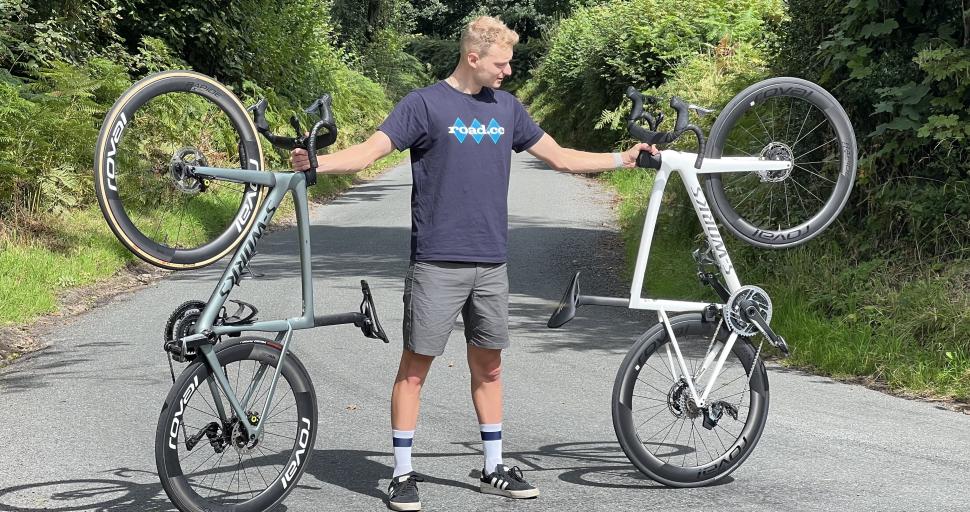
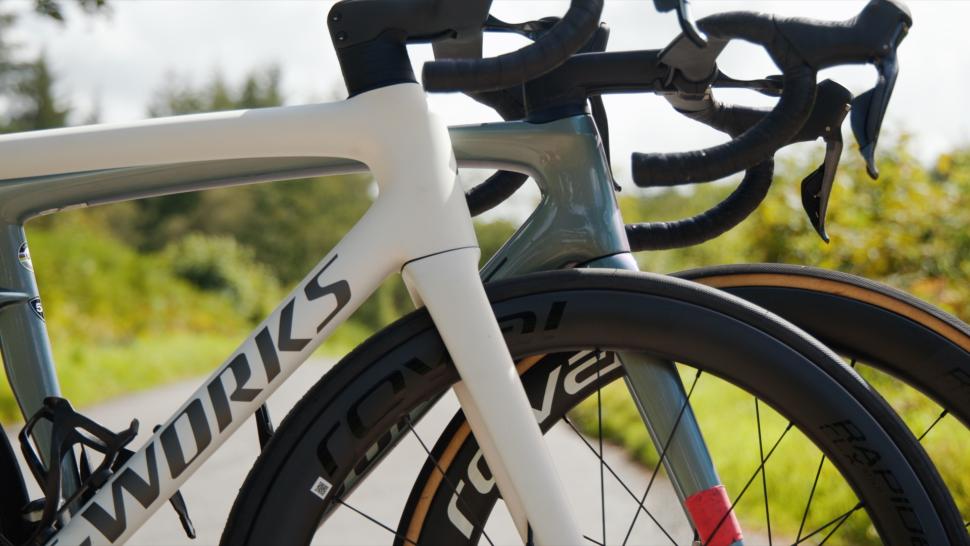

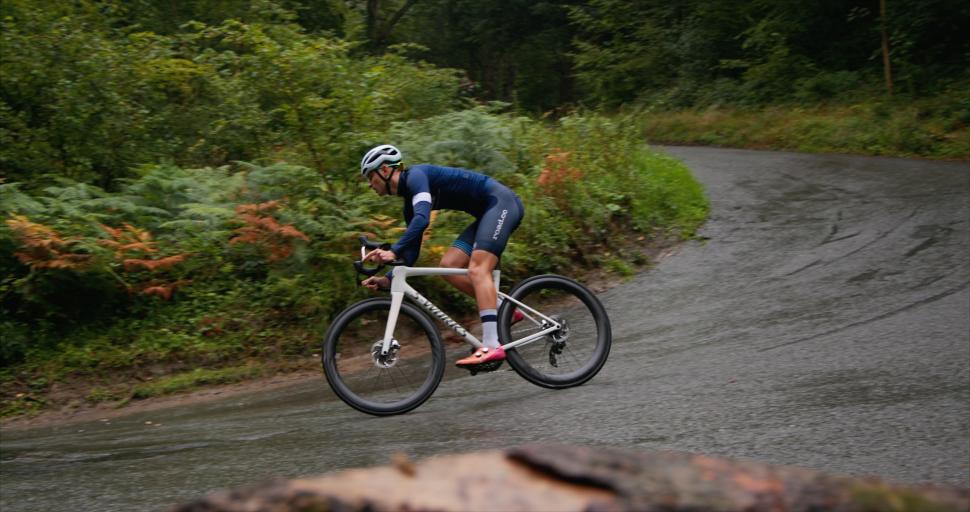

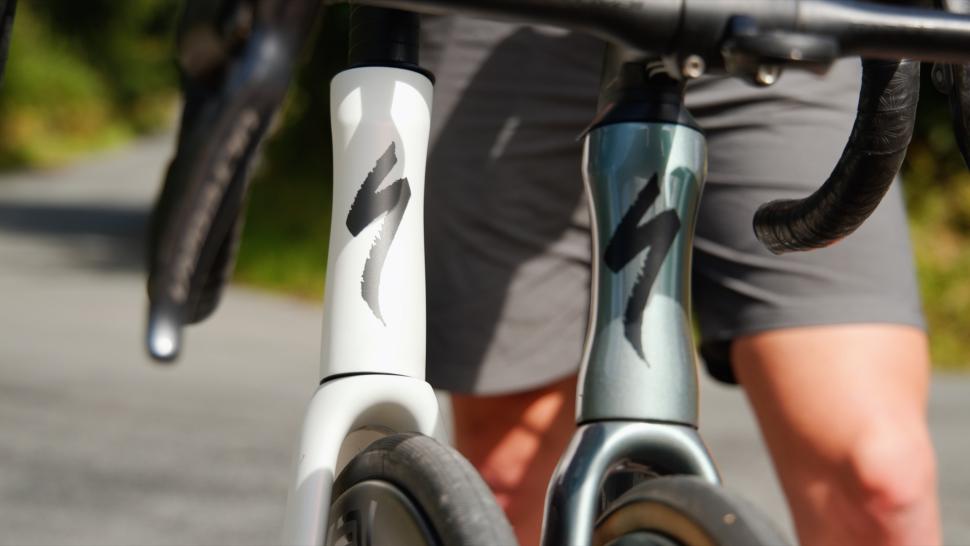
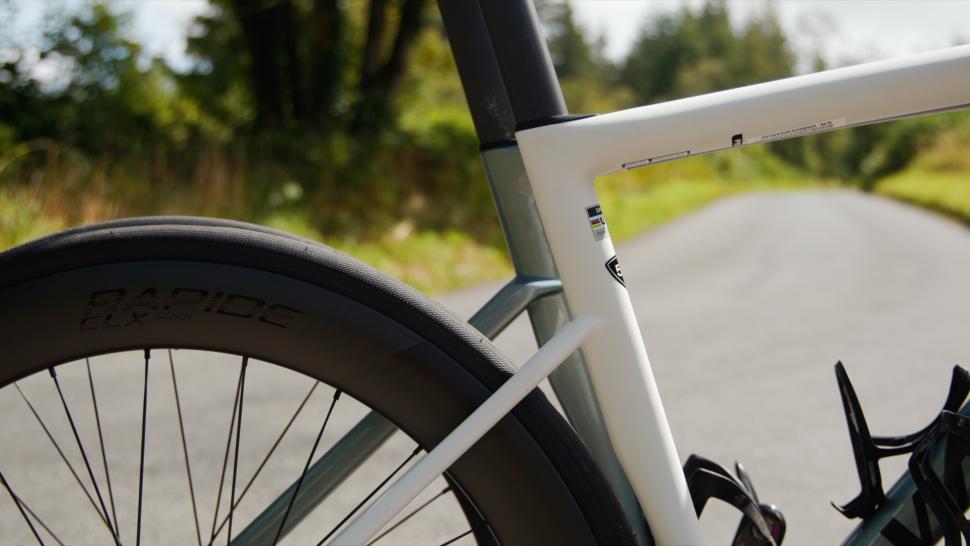



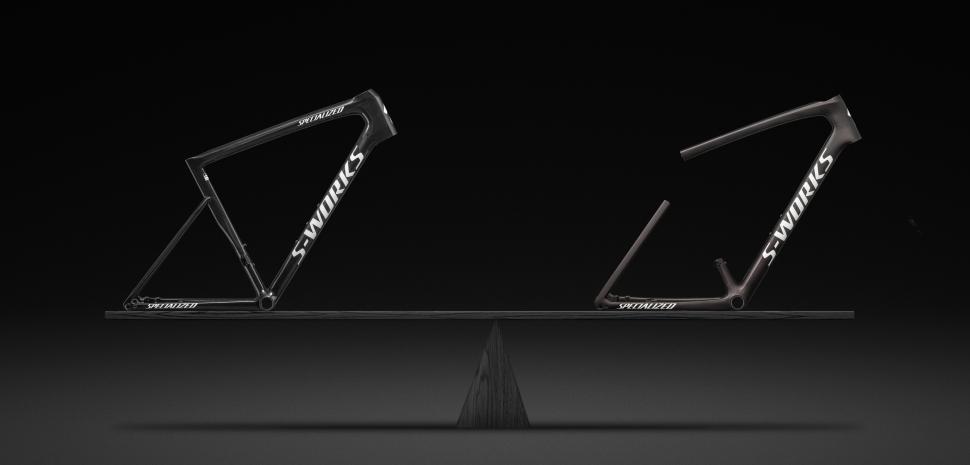
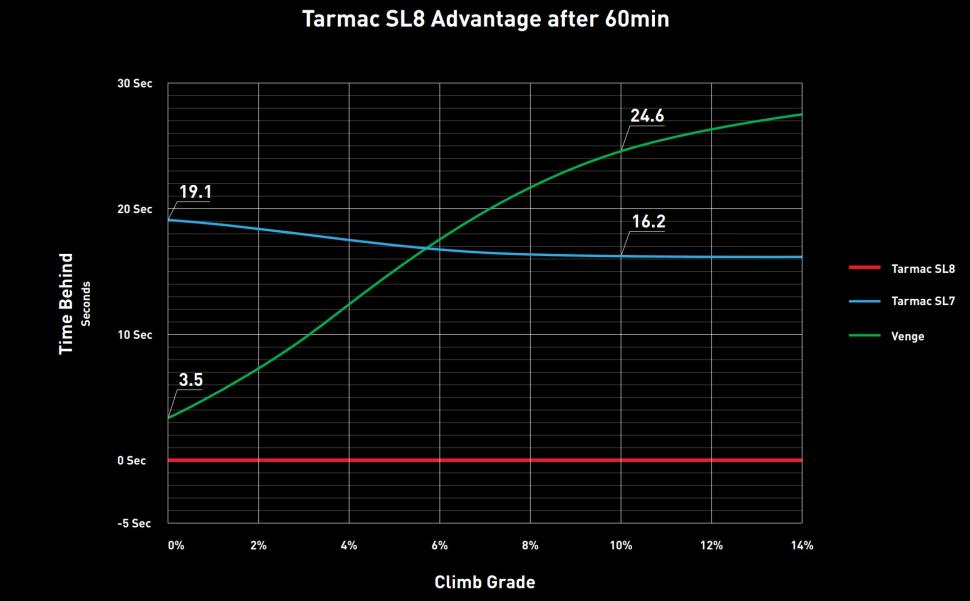

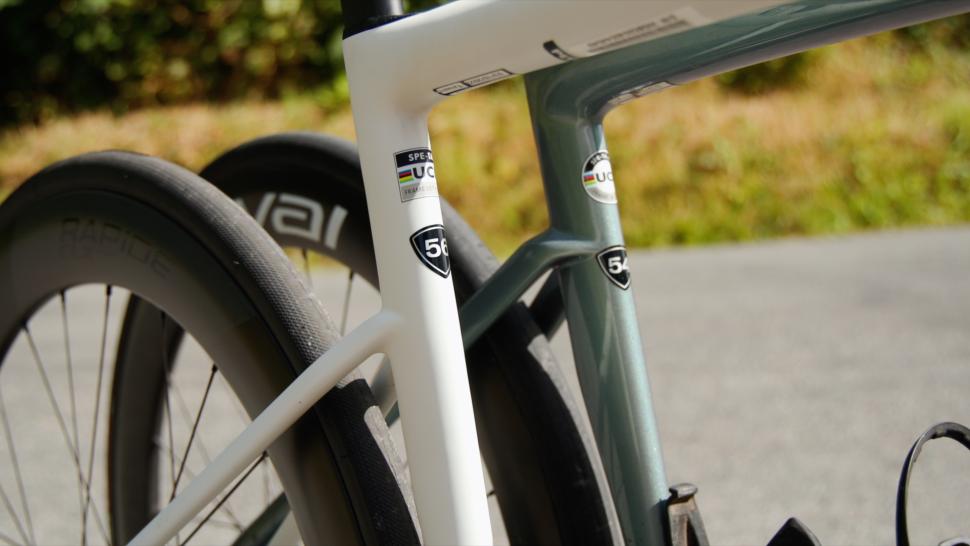
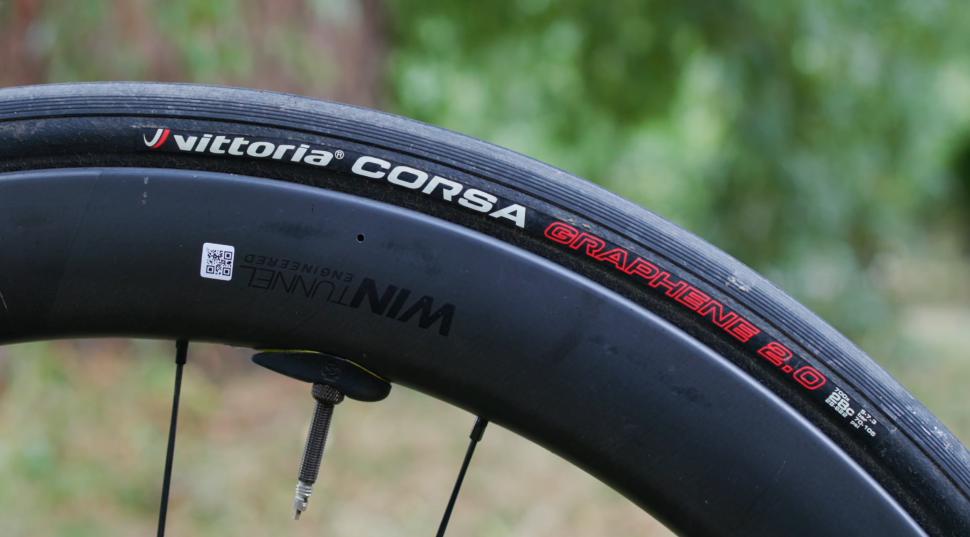
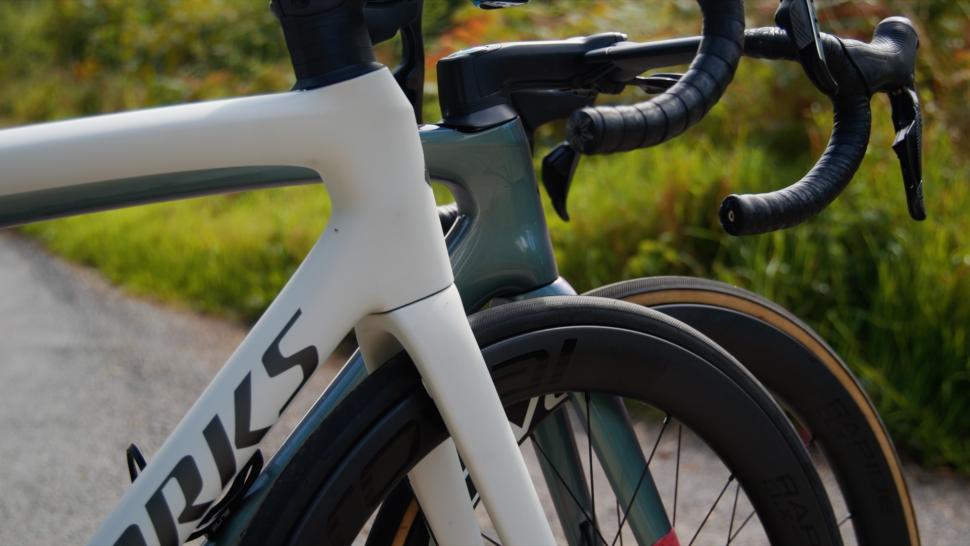
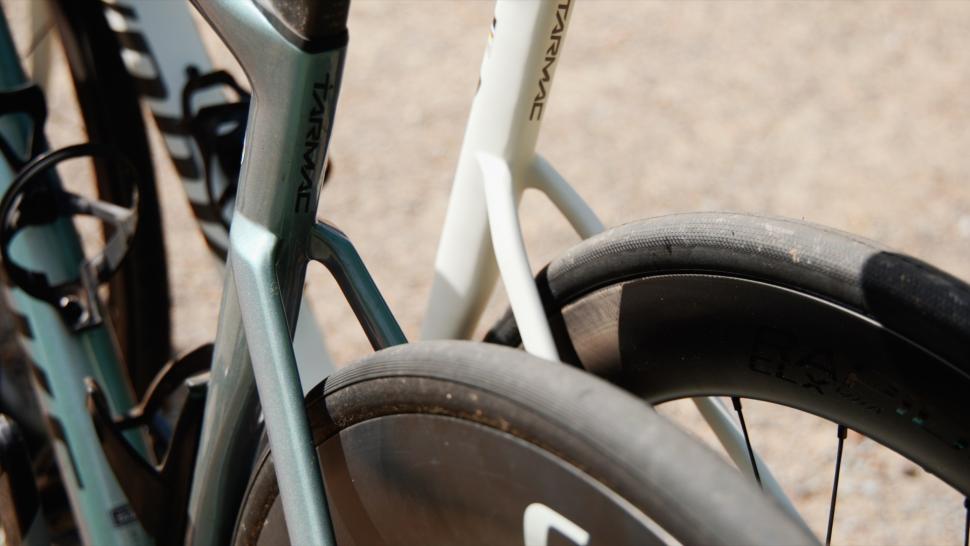
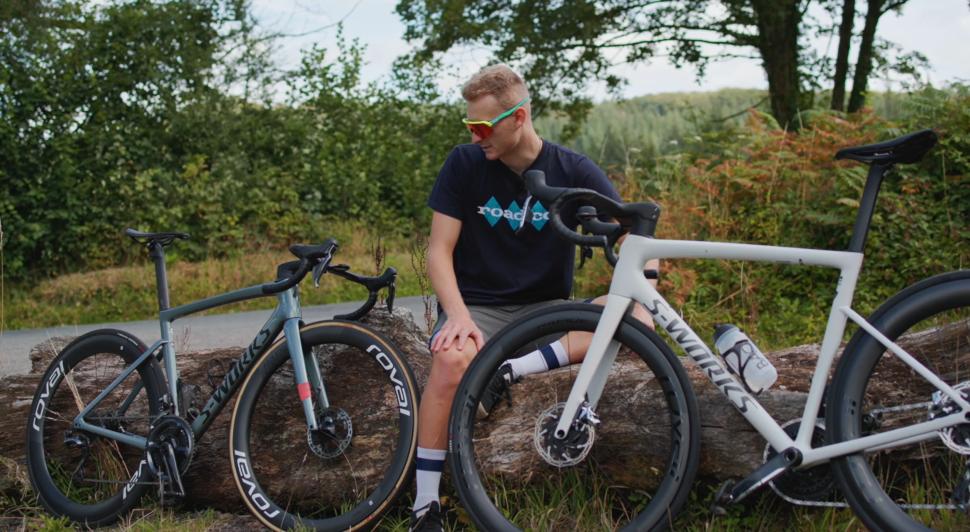
Add new comment
24 comments
This is not a true test of anything since the test bikes are different sizes The sl7 is a 54 and the sl8 is a 56 which would easily account for any ride quality difference associated with the frame for the same size rider. ride characteristics also vary enough that a true test of frames would need to be on the same wheels/tires.
What? Do you have any evidence that you havent just made up that frame size differences affect ride quality?
Your wheel point is accurate however....
Great vid thanks for sharing. I quite recently purchased my SL7 at what I thought was a great price, thinking the SL8 would be in the 13-15k bracket, only to find the SL8 priced at only a grand more for the top spec model. You can imagine the frustration, particularly given it looks nowhere near as bad as the leaked photos suggested it might. But your vid has made me feel somewhat better about this!
You mention getting the new cockpit on your SL7. I've seen a YouTube vid from a few months back where the guy says it doesn't fit snugly onto the SL7 - he said the pros have a spacer that fills the gap created under the stem but at the time of recording, Specialized didn't supply one (he'd had to get a little spacer 3D printed so it would). I've asked the question of whether this is now available to the public on the concept store but received no response. Anyone know if they now supply a spacer makes the new cockpit fit nicely on the SL7??
Part number is S232500001. Doesn't seem to be available direct to the public yet, but check with your local Specialized dealer.
Thanks for this, I'll see if I can find one
And, if we were to compare the SL8 to the SL6 ?
I've read many time that the S7 has lost some comfort vs SL6...so the SL8 comes back to SL6 compliance?
I feel like the SL8 is almost closer to SL6 (thinner lines, headtube), but with aero benefits ?
The SL6 rim brake was probably the best bike Specialized ever made.
Careful now with opinions like that, somebody will be along in a moment questioning the data content you used to reach that conclusion, what control samples were in place, whether you evidentially and extensively tested every single bike ever from that manufacturer and what qualifications you have in empirical analysis.
Oh wait, it's an opinion? Yes I sort of agree, although I think the gen 3 Venge was a bit special IMO.
Id suggest his reasoning is more down to being a bit pissed that after spending £10k for a bike you expect to be top of the range, the manufacturer goes and supercedes it. Not only superceding it after only a few years, but pretty much saying your £10k bike is actually inferior to a lower spec of the new version.
If we go by Specialized the S-Works SL7 frame weighs in at 800g but the SL8 Expert/Pro frameset weighs 780g. Add to that they say the new frame is far more aero, you're pretty much relagating the S-Works SL7 to 3rd place. But with a huge price tag to add insult.
If you buy any top end bike from one of the big brands, surely it's in full knowledge that, in [x] years, they're going to release a new one which they will tell you is better - that is hardly surprising behaviour. What I do find amazing is that people will consider upgrading that quickly. I simply can't imagine spending £10k on a bike and then replacing it in 3/4 years with the latest iteration. Or spending £10k on a bike at all for that matter. But each to their own.
Agree, but the SL7 was only released 2-3 years ago. I would expect a bit more life out of it before its replaced than that.
Lets say you bought an S-works SL7 Frameset 2 months ago. You can now get a lighter more aero Standard Tarmac SL8 for less than the SL7 S-works. I would not be happy if that were the case. For some having 's-works' written down the side means more than to others, but in the real world, you could have bought a better frameset for less and it be the latest version.
If you were to buy a new frameset today which of these would you buy?
https://www.bespokecycling.com/shop/products/specialized-s-works-tarmac-sl7-frameset-1?colour=Fluid%2FSatin+Black&size=61
https://www.specialized.com/gb/en/tarmac-sl8-frameset/p/216957?color=350020-216957
The standard 10r. It's 100g heavier but you get 98% of the performance for a lot less money (which you can spend on going places, Roval wheels or whatever). And that 100g may make it a little more robust in the real world of use and ownership. The S-Works moniker is so over-hyped IMHO.
£3,000 vs £4,750 according to Bikeradar.
Same here. It may be 100g heavier but it's still lighter than an S-Works SL7. So you could actually build up a far better bike than a 6 month or so old S-Works. Which if you had not long ago bought one might feel a little aggrieved about.
Its 100g. Thats half a pre-ride poo or 100ml less water in your bottle.
Get over your weight obession, its a mugs game from Marketing to sell more bikes.
I take your point. But anyone for whom the differences between SL7 and SL8 matter that much would surely have been aware 2 months ago that there was a new version in the offing? There will definitely be people for whom the S-Works badge means more than an objectively better frame with Specialized written on the downtube.
Such is the allure (and power) of marketing spin.
And Specialized are very good at it.
Even if a rider is experienced enough to be able to detect any differences with a back-to-back comparison, once they have ridden either bike in isolation for a short period then in reality those differences become undetectable.
"Being a few years old, the SL7 obviously isn’t still selling at the RRP price, so right now a top-tier SL7 will set you back around £2,000 less than the equivalent SL8. Realistically that’s about the amount of money that I or anyone else looking to upgrade from an SL7 is going to have to stump up."
I don't follow. Is this suggesting you can sell a used SL7 for about £10,000, then add £2,000 of new cash to buy a new SL8? I don't know the market, but can you really sell an SL7 for that? Ebay sold listings suggest not, so isn't the upgrade cost significantly higher than £2k?
I took that to mean that a top spec SL7 can be had new for £10k, £2k less than the SL8 at full RRP, there's one here at Sigma Sports, rather than a used one.
https://www.sigmasports.com/item/Specialized/S-Works-Tarmac-SL7-Dura-Ace...
Yes, that's what I thought it really meant. But then that leaves me confused about how the owner of a SL7 only needs to stump up £2,000 to upgrade to a SL8...
Glad it wasn't just me who was confused.
Looking through recently sold S-Works SL7 framesets they seem to be going for in the region of £3,200, that means I would have to spend £1,550 additional to purchase a £4,750 SL8 frameset, I'm therefore pretty confident that I could indeed upgrade the SL7 to an SL8 frameset for around £2,000. Hope that clarifies things a little. I can remove the full bike RRP's if necessary, I just thought that they were a convenient way of comparing the current value of the two bikes
Ah, I see, just upgrading the frame, that's the missing link. Sorry, that wasn't clear to me as it followed directly after talking about the RRPs of whole new bikes.
ATM machine...PIN number...
And, if we were to compare the SL8 to the SL6 ?
I've read many time that the S7 has lost some comfort vs SL6...so the SL8 comes back to SL6 compliance?
I feel like the SL8 is almost closer to SL6 (thinner lines, headtube), but with aero benefits ?